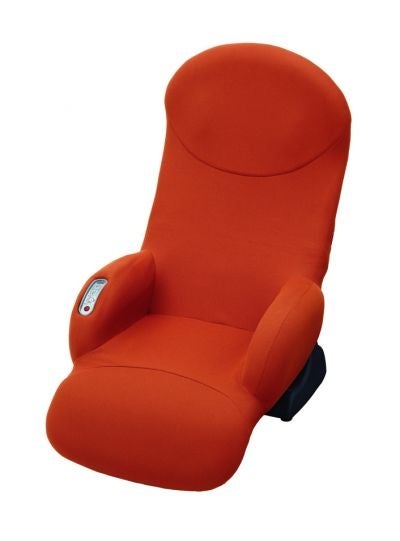Your support helps us to tell the story
From reproductive rights to climate change to Big Tech, The Independent is on the ground when the story is developing. Whether it's investigating the financials of Elon Musk's pro-Trump PAC or producing our latest documentary, 'The A Word', which shines a light on the American women fighting for reproductive rights, we know how important it is to parse out the facts from the messaging.
At such a critical moment in US history, we need reporters on the ground. Your donation allows us to keep sending journalists to speak to both sides of the story.
The Independent is trusted by Americans across the entire political spectrum. And unlike many other quality news outlets, we choose not to lock Americans out of our reporting and analysis with paywalls. We believe quality journalism should be available to everyone, paid for by those who can afford it.
Your support makes all the difference.When the first home-use massage chairs appeared in Japan's electronics stores three decades ago, they were clearly designed to ease the aches and pains out of the shoulder and limbs of the master of the house.
They were large - so large, in fact, that they dominated small Japanese living rooms - and were made of male-friendly leather. Some models even had built-in ash trays for a tired salaryman's post-dinner cigarette.
Japanese society has undergone a major change in the last 30 years, however, and today it is young, single women with high disposable incomes who are driving consumption.
And consumer electronics companies that produce such luxuries as massage chairs have caught on to the new trend.
"We have deliberately set out to attract young women with this range of chairs and we want the product to be seen as more of an item of interior deign than an electronic gadget," Yuko Hosaka, a spokeswoman for Sanyo Electric Co., told Relaxnews.
"Our HEC-L20 series is smaller and comes in a range of bright colors, while it is also much more affordable than the larger versions," she said.
The HEC-L20 was launched in October and retails for a mere Y60,00 (€507.37), a substantial reduction from the Y200,000 (€1,691) that one would expect to pay for a conventional model. Top-of-the-range versions can sell for double that price.
The company was able to keep the price down by doing away with massage balls that are built into the back of other models and replacing them with air bags that apply pressure to the lower back, hips and buttocks. Sanyo has also reduced the scale of the gadget so it stands just 89 cm high and is less than 60 cm wide.
"We wanted something that was affordable but still performed most of the massage functions of larger chairs and we have been very pleased with how the product is selling," Hosaka said.
Panasonic Corp. was arguably the company that triggered the trend for sleek, female-friendly massage chairs, releasing two models in May of last year that have gone on to become hit products. In 2009, around 60,000 units were sold, accounting for fully one-quarter of total domestic sales of massage chairs in the previous year.
And despite the declining economy - or perhaps even because of the economic difficulties that Japan has faced over the last two years - sales of massage chairs climbed 15 percent last year.
JR

Join our commenting forum
Join thought-provoking conversations, follow other Independent readers and see their replies
Comments